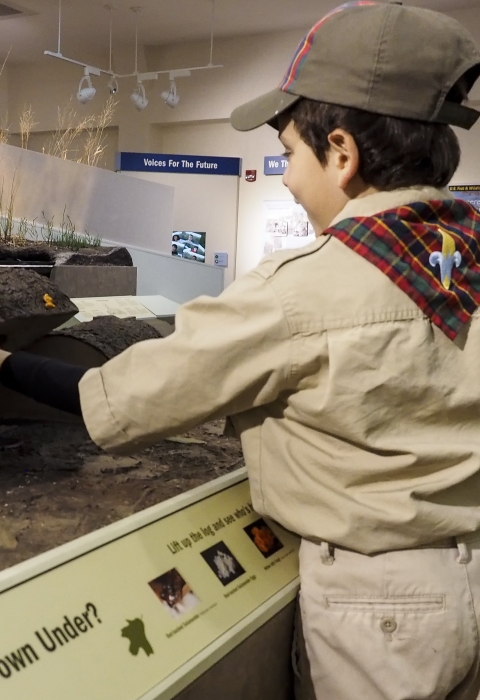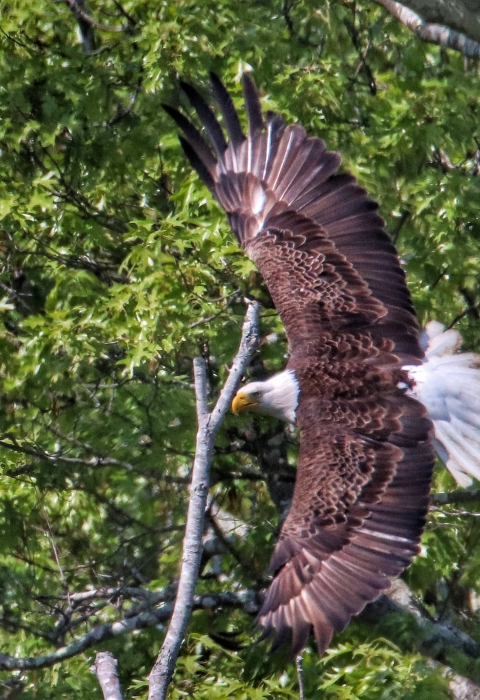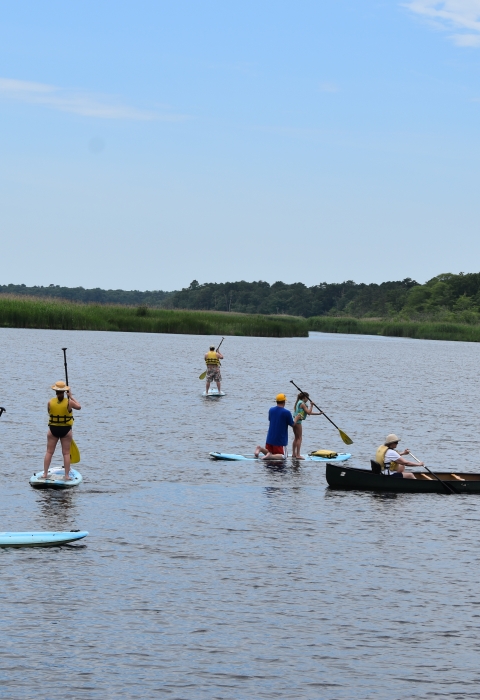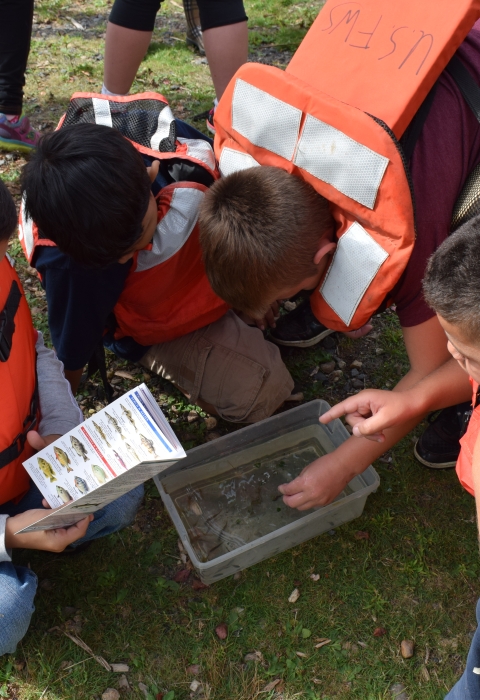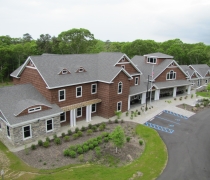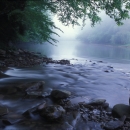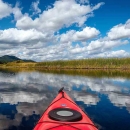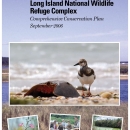Visit Us
Know Before You Go
- Late October through early April offer the best times to view waterfowl on the refuge. The forest come alive in spring with the arrival of warblers and other migratory songbirds, while, red fox, wild turkey and white-tailed deer may greet you year-round.
- Mosquitoes and flies can be prevalent during the spring and summer. Be sure to bring bug spray.
- Poison ivy and ticks are found throughout the refuge. Stay on the trails to limit your exposure.
- Restrooms are located at the visitor center and the start of the White Oak trail.
Location and Contact Information
About Us
Established in 1947, Wertheim National Wildlife Refuge protects 2,550 acres on the south shore of Long Island. The refuge is bisected by the Carmans River, a New York state designated scenic river and one of the largest rivers on the island. Wertheim hosts a variety of habitats including oak-pine woodlands, grasslands and fresh, brackish and salt water wetlands. These habitats attract and support many types of wildlife including white-tailed deer, osprey, muskrat, fox, turtles, frogs and fish. The refuge also serves as a haven for waterfowl, shorebirds, raptors and songbirds. Wertheim is also home to the refuge complex headquarters and visitor center.
Tours
Points of Interest
- Experience the interactive exhibit hall featuring Long Island ecosystem dioramas, Discovery Island touch table and night room.
- Visit the nature store run by the non-profit Friends of Wertheim Refuge.
- Hike almost six miles of trails through Pine Barrens forests and along the State designated “scenic Carmans River.”
- Discover recreational opportunities on all the Long Island National Wildlife Refuges.
- FREE Junior Refuge Manager program (Ages 7 – 12) and Virtual Geocache program (Ages 10 – 16)
What We Do
Wildlife conservation is at the heart of the National Wildlife Refuge System. It drives everything on U.S. Fish and Wildlife Service lands and waters managed within the Refuge System, from the purposes for which a national wildlife refuge national wildlife refuge
A national wildlife refuge is typically a contiguous area of land and water managed by the U.S. Fish and Wildlife Service for the conservation and, where appropriate, restoration of fish, wildlife and plant resources and their habitats for the benefit of present and future generations of Americans.
Learn more about national wildlife refuge is established to the recreational activities offered to the resource management tools used. Using conservation best practices, the Refuge System manages Service lands and waters to help ensure the survival of native wildlife species.
Refuges deploy a host of scientifically sound management tools to address biological challenges. These tools span active water management to wilderness character monitoring, all aimed at ensuring a balanced conservation approach to benefit both wildlife and people.
Our Organization
Our Species
Hundreds of species of plants, fish, birds, and mammals flourish here, depending on the Carmens River and adjacent lands for survival. Some are year round residents, some just pass through. What you can see changes with the seasons, but if you are quiet and patient there is always something to see.
Projects and Research
Management Goals
Refuge management goals are:
- Provide and manage a diversity of high quality habitats to support breeding, migrating and/or wintering birds, threatened & endangered species and fish.
- Maintain high quality habitats for all native wildlife and plant species.
- Establish and maintain partnerships to benefit wildlife for present and future generations.
